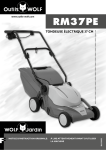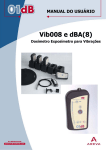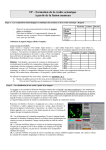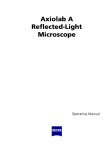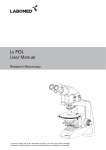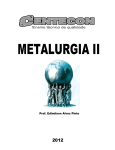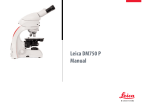Download Zeiss Axioplan Universal microscope Operating instructions
Transcript
UD 124 Universal Rotary Stage Operating manual Knowledge of this manual is required for the operation of the instrument. Please therefore familiarize yourself with its contents and pay special regard to the sections dealing with the safe handling of the instrument. © Unless expressly authorized, forwarding and duplication of this document, and the utilization and communication of its contents are not permitted. Violations will entail an obligation to pay compensation. All rights reserved in the event of granting of patents or registration of a utility model. Please contact: Carl Zeiss Mikroskopie D-07740 Jena Telefon: (03641) 64-1616 Fax: (03641) 64-3144 Internet: [email protected] http://www.zeiss.de Subject to change B 40-017 e / 12.96 Contents 1 Notes .................................................................................................................................2 2 System overview...............................................................................................................3 3 Application .......................................................................................................................4 4 Instructions for use............................................................................................................5 4.1 Adaptation of universal rotary stage ................................................................5 4.2 Preparation of universal rotary stage ................................................................8 4.2.1 Positioning the sample..........................................................................8 4.2.2 Imaging the sample .............................................................................8 4.2.3 Centering the universal rotary stage to the microscope axis ............8 4.2.4 Vertical adjustment of sample.............................................................8 4.2.5 Aligning the A2 and A4 axes to the eyepiece crosslines ....................8 4.3 Application examples ........................................................................................9 4.3.1 Orthoscopic work in linearly polarized light ........................................9 4.3.2 Conoscopic work in linearly polarized light ........................................9 4.3.3 Work in circularly polarized light.........................................................10 5 Modules ...................................................................................................................... ....11 5.1 Universal rotary stage .......................................................................................11 5.1.1 Sample.................................................................................................11 5.1.2 Schmidt ruler........................................................................................11 5.1.3 Segments.............................................................................................11 5.2 Objectives.........................................................................................................11 5.3 Condensers .......................................................................................................12 5.4 Wulff network ....................................................................................................12 6 Maintenance ..................................................................................................................13 7 Literature .........................................................................................................................14 8 Wulff network for stereographic projections ................................................................15 B 40-017 e / 12.96 1 1 Notes Operation! The instrument may be operated by trained personnel only who must be familiar with the possible dangers involved in microscopy and the relevant field of application. Dust! Dust and dirt can impair the performance of the instrument. Therefore, protect the instrument against these interferences as far as possible. Always use the dust cover if you do not intend to use the microscope for longer periods of time. Use of toxic immersion agents! If the toxic -bromonaphthalene is used as an immersion agent, make sure to avoid all skin contact with this substance to elimi-nate the possibilty of health risks. Wear protective goggles and gloves, if necessary.. Damage to microscope parts! To eliminate collisions between the objec-tives and parts of the universal rotary stage during work, the 4-position objective nose-piece of the Axiolab Pol must be equipped with no more than 2 objectives, with a free nosepiece eye between each objective. The 6position nosepiece of the Axioplan Pol may accommodate 3 objectives (always separated by a free eye). Use caps to close nosepiece eyes not in use. 2 B 40 - 017 e / 12.96 2 System overview 1 2 3 4 5 6 7 8 9 10 11 12 13 UD 124 universal rotary stage for Axiolab Pol UD condenser 0.6 pol für Axiolab Pol Achromat objective 5x/0.10 Pol segment Achromat objective 20x/0.30 Pol segment Achromat objective 50x/0.60 Pol segment for conoscopy Upper segments nD = 1.516; 1.556; 1.648 Lower segments nD = 1.516; 1.556; 1.648 Ball head screw driver SW 3 Pin wrench SW 1.5 Stage clamps Schmidt ruler UD condenser for Axioplan Pol, Axioplan 2 Pol, Axiophot Pol, Axiophot 2 Pol UD 124 universal rotary stage for Axioplan Pol, Axioplan 2 Pol, Axiophot Pol, Axiophot 2 Pol B 40 - 017 e / 12.96 Fig. 1 System overview 3 3 Application The three-axis universal rotary stage (FigFig. 1/1) is mounted on the rotary stage of the polarization microscope of the Axioplan Pol, Axioplan 2 Pol, Axiophot Pol und Axiophot 2 Pol microscopes. For the Axiolab Pol, the universal rotary stage is equipped with a special stage carrier (Fig. 1/13) and mounted directly on the stand in place of the rotary stage. Observation and measurement is generally possible in the orthoscopic and the conoscopic mode. Linearly polarized and circularly polarized light can be used. With the help of one rotary and two tilting axes (stage 1), the threeaxis universal rotary stage is suitable for aligning a crystal, which normally is birefringent, in any defined direction relative to the optical axis of the microscope. The major fields of application of the universal rotary stage can be classified into three categories: Reinhard [10] and Sarantschina [12] have introduced different definitions. The axial designations of Sarantschina are based on the inventor of the universal rotary stage, E. S. von Fedorow. With the three-axis universal rotary stage the A3 axis has not been developed. This, however, is no drawback, because three axes are absolutely adequate for aligning any orientation in the sample relative to the optical axis of the microscope. In addition, the possibility of operational errors is reduced. Given the option, old hands will therefore normally give preference to a three-axis universal rotary stage over the four-axis one. Axial definition: Berek A1 Crystal diagnosis Determining the optical character Determining the absolute birefringence Determining the grinding thickness Measuring position and dimension of indicatrix Measuring the optical shaft angle Measurement of morphological reference planes, such as cleavage faces, composition surfaces of twins or the periphery of idiomorphous unit crystals Determining the pleochroism A2 A3 A4 A5 Determining the chemical composition of mixed crystals Examination of plagioclases Analysis of alkali feldspas Analysis of pyroxenes and amphiboles Reinhard Sarantschina N= Normal axis H= Horizont axis A= Auxiliary axis K= Control axis N= Normal axis H= Auxiliary axis M= Mobile axis I= Immobile axis M= A= Microscope Optical miaxis croscope axis = Rotary axis of microscope stage Universal rotary stage component Inside rotary axis Inside tilt axis Outside rotary axis Outside tilt axis Rotary axis of microscope stage = Optical microscope axis Table 1 Structural analysis Analysis of the structural arrangement of optically monaxial crystals, e.g. quartz in quartzite or calcite in marble Analysis of the structural arrangement of biaxial crystals, e.g. muscovite in gneiss. The most customary and also the clearest definition of the axes of a universal rotary stage is the one introduced by Berek in 1924, in which the axis numbers increase from the inside toward the outside. The inside rotary axis, for example, is numbered A1, the inside tilt axis A2. The rotary axes are provided with odd, the tilt axes with even numbers. 4 Fig. 2 Axial definition of universal rotary stage B 40 - 017 e / 12.96 4 Instructions for use 4.1 Adaptation of universal rotary stage Axiolab Pol Axioplan Pol, Axioplan 2 Pol, Axiophot Pol, Axiophot 2 Pol Remove rotary stage in accordance with micro- Center scope manual. the rotary stage to the microscope in accordance with the manual, take out the reducing plate. Remove objectives. Remove the Pol objective and Pol condenser. Adjust the coarse drive to its upper limit stop. Move the stage carrier to its top stop, raise the and lower the condenser carrier as far as Insert the 0.6 Pol UD condenser (Fig. 1/2) in the stage it will go. condenser carrier of the universal rotary stage. For this purpose, lower the condenser drive Insert the 0.6 Pol UD condenser.(Fig. 1/12) (Note! (Fig. 3/8) as far as it will go and insert the UD condenser (Fig. 1/2) in the dovetail guide of the condenser carrier. Make sure the condenser is correctly seated and clamp it (Fig. 3/16). Then raise the condenser drive again (Fig. 3/8). Place the condenser in an almost vertical position, slide it into the dovetail and clamp it, (see microscope manual. If necessary, remove the rotary stage from the stand, insert and clamp the condenser and replace the rotary stage). Then slighly move up the condenser drive. Mount the universal rotary stage on the stand so Lower the stage carrier by about 15 that the retaining pin (Fig. 3/7) is in contact with the dovetail guide of the microscope and clamp it (Fig. 3/17). The stage is now automatically centered to the optical axis of the microscope; lower the condenser carrier as far as it will go. mm and clamp it. (See microscope manual.) Place the UD 124 universal rotary stage on the microscope stage (Fig. 4/7) and use the ballhead screwdriver (Fig. 1/8) (or a 90° offset Allen key) to tighten the two mounting screws (Fig. 4/4 and 10). Set the tilt positions about the axes A2 and A4 to Set the tilt positions about the axes A2 and A4 to 0° click stops (Fig. 3/1 and. Fig. 3/19), switch to the click stops (Fig. 3/13 and. Fig. 3/14), set the graduated circle of the A1 axis to the 0°-mark (Fig. 3/3) and clamp all tilt movements (Fig. 3/21 and 26). 0° click stops (Fig. 4/1 and. Fig. 4/15), switch to the click stops (Fig. 4/13 and. Fig. 4/14 set the graduated circle of the A1 axis to the 0°-mark (Fig. 4/3) and clamp all tilt movements (Fig. 4/17 and 22) Screw the UD Achromat Pol objectives (Fig. 1/3, Adjust the vertical 4, 5) into the nosepiece, always leaving one nosepiece eye between each objective vacant. (It is recommended to use two objectives). Use dust caps to close the vacant nosepiece eyes. condenser stop so that the condenser will not hit the stage (see manual). Check whether the spacer ring H“0“M 27 on W 0.8 (4549109) has been screwed into the fixed (not centerable) nosepiece eye. (Screw in if necessary.) Screw the UD Achromat 20x/0.30 Pol in this nose-piece eye, screw in the other objectives so that one eye is left vacant between each of them. Use dust caps to close the vacant nosepiece eyes. Table 2 B 40 - 017 e / 12.96 5 4 Instructions for use 1 2 3 4 5 6 7 8 9 10 11 12 13 14 15 16 17 18 19 20 21 22 23 24 25 26 6 Vernier A2 Schmidt ruler Vernier A1 Clamping screw A5 Click stop mechanism A5 Pins for vertical adjustment of lower segment (4x) Arresting pin universal rotary stage Control for condenser height adjustment Vertical condenser stop Centering screw for condenser Dovetail for condenser Aperture diaphragm Condenser Click stop mechanism A2 Centering screw for condenser Clamping screw for condenser Clamping screw for univ. rotary stage Click stop mechanism A4 Vernier A4 Threaded bore for stage clamp Clamping mechanism A2 Screw for upper segment Lower segment Upper segment Annular bearing Clamping device A4 Fig. 3 Universal rotary stage for Axiolab Pol B 40 - 017 e / 12.96 4 Instructions for use 1 2 3 4 5 6 7 8 9 10 11 12 13 14 15 16 17 18 19 20 21 22 Vernier A2 Schmidt ruler Vernier A1 Screw for mounting univ. rotary stage Click stop mechanism A5 Clamping screw for stage centering Rotary stage of microscope Clamping screw A5 Adjusting screw for stage centration Mounting screw for univ. rotary stage Adjusting screw for stage centration Clamping screw for stage centration Click stop mechanism A2 Click stop mechanism A4 Vernier A4 Threaded bore for stage clamp Clamping mechanism A2 Screw for upper segment Lower segment Upper segment Annular bearing Clamping mechanism A4 B 40 - 017 e / 12.96 Fig. 4 Universal rotary stage for Axioplan Pol 7 4 Instructions for use 4.2 Preparation of universal rotary stage 4.2.1 Positioning the sample Select the suitable segment pair (Fig. 1/6 and 7), The refractive indices of the sample and the segment pair should be almost identical. For quartz or feldspa crystals, for example, the segment pair featuring the refractive index nD = 1,556 should be selected, for pyroxen or amphibol crystals the one with the refractive index nD = 1,648. Insert the larger, lower segment (Fig. 1/7) into the annular bearing (Fig. 3/25) to fit the groove. Apply immersion fluid, e.g. glycerin, to the flat segment surface. Position the sample and put one drop of immersion fluid on it. Center the upper segment (Fig. 1/6) parallel to the sample so that the screws (Fig. 3/22) touch the threaded bores in question. Lightly tighten the screws so that the immersion fluid is evenly distributed and shows no bubbles. Align the objective on the nosepiece with the rotary axis A5 according to the microscope manual. (For the Axioplan Pol, Axioplan 2 Pol, Axiophot Pol and Axiophot 2 Pol microscopes, check the center-ing of the microscope stage and re-center it, if necessary.) Arrest the microscope stage (Fig. 4/8). Rotate the sample through axis A1. Use the adjusting screws (Fig. 4/9 and 11) and pin key (Fig. 1/9) to align the rotary axis of the universal rotary stage relative to the rotary axis of the microscope stage in accordance with the crosslines visible in the eyepieces, tighten the clamping screws (Fig. 4/6 und 12) with the ball-head screwdriver (Fig. 1/12) (This secures the centering). 4.2.4 Vertical adjustment of sample Loosen the clamps of axis A4 (Fig. 3/26) and observe the sample as it is tilting. If the sample moves in the direction of rotation, it is located too high. If it moves opposite to the direction of rotation, it is located too low. If the specimen remains unchanged when it is tilted about axis A4, it is at the correct height. In this case the intersections of the universal rotary stage axes, the center point of the sphere and the focus are located in this point, which is intersected by the surface of the sample. If the sample is too high, use the pins (Fig. 3/6) to turn the threaded ring counter-clockwise as seen from below. When the correct height has been reached, lightly tighten the screws (Fig. 3/22). If the sample is too low, loosen screws (Fig. 3/22) and turn the threaded ring (Fig. 3/6) clockwise as seen from below. When the correct height has been reached, lightly tighten the screw (Fig. 3/22), if necessary. 4.2.2 Imaging the sample Sharply image the sample and use the condenser to illuminate it (as specified in the microscope manual). Sharply image the narrowed luminous field diaphragm together with the sample, center and open it until the field of view is visible. 4.2.5 Aligning the A2 and A4 axes to the eyepiece crosslines Tilt the universal rotary stage about the A4 and A2 axes while observing the direction in which a dust particle below or above the object plane is moving. When the stage is tilted about the A4 axis, the particle must move parallel to the vertical line of the eyepiece crosslines. It it fails to do so, disengage the stage click stop mechanism and perform the necessary alignment by rotating the stage through the A5 axis.. Activate the stage click stop mechanism. When the stage is tilted about the A2 axis, the particle must move parallel to the horizontal (left-right), when tilted about the A4 axis, parallel to the vertical eyepiece crossline (topbottom). This is the standard setting. 4.2.3 Centering the universal rotary stage to the microscope axis The universal rotary stage of the Axiolab Pol has already been centered by the manufacturer. With the polarization microscopes Axioplan Pol, Axioplan 2 Pol, Axiophot Pol and Axiophot 2 Pol the universal rotary stage must be centered relative to the rotary axis of the microscope stage. 8 B 40 - 017 e / 12.96 4 Instructions for use 4.3 Application examples 4.3.2 Conoscopic work in linearly polarized light 4.3.1 Orthoscopic work in linearly polarized light Example 1: Measuring the angle 2 V of the optical axis of a biaxial crystal Center the selected grain in the crosslines. Switch in the 5x/0.13 objective (standard use). Adjust the iris diaphragms of the 20x/0.30 and 50x/0.60 objectives and the aperture diaphragm of the condenser (Fig. 3/12) to increase the contrast of the Axiolab Pol (same procedure for Axioplan-microscopes). Rotate through the A1 axis to dark position. Tilt about A4 axis (max. possible angle). Nor- mally this will result in brightening up. Tilt about the A2 axis to dark position. Tilt about the A4 axis in opposite direction until it brightens up. Rotate through the A1 axis to extinction. If the grain remains dark when the stage is tilted about the A4 axis, the plane of the optical axis lies parallel to the microscope's symmetry plane (if not, repeat the previously described steps). Clamp the A2 axis (Fig. 3/21). The advantage of the conoscopic over the orthoscopic method is that the axial directions of monaxial or biaxial crystals can be identified directly in the interference image. For this purpose, a high-aperture (e.g. 50x/0.60) LD (long distance) objective and a Bertrand lens permitting observation of the rear focal plane of the objective are required. Example 2: Measuring the angle 2 V of the optical axis of a biaxial crystal (conoscopically) Proceed as described in example 1 (steps 1 to 10). Switch in the 50x/0.60 objective. Switch in the Bertrand lens (focus Axioplan mi- croscopes). Use the graduated circle and the vernier (Fig. 3/19) to measure the optical axis by tilting about A4. The axial directions can be identified from the curved, dark , hyperbola branches. The exit point of the crystal's optical axis lies in the vertex of the hyperbola. Note: If only one optical axis is located within the tilting range about A4, proceed as described in example 1. For Axioplan microscopes, release the clamp- ing device of the microscope stage (Fig. 4/5) and rotate the universal rotary stage by 45° through the A5 axis up to the next click stop. Use the graduated circle and the vernier (Fig. 3/19). to measure the optical axes (dark position when tilted about the A4 axis). If only one of the axes of a biaxial crystal lies between the tilting range A4, the angle of the optical axes must be determined using the Wulff network (Fig. 5). B 40 - 017 e / 12.96 9 4 Instructions for use 4.3.3 Working in circularly polarized light. The Axiolab Pol, Axioplan 2 Pol and Axiophot 2 Pol microscopes permit the universal rotary stage to be used also for work in circularly polarized light. For this, the circular polarizer D consisting of a polarizer and two /4 plates must be used. The polarizer and one of the /4 plates is used in the place of the standard polarizer. The second /4 plate is inserted in the compensator mount. Before doing so, adjust the polarizer and the analyzer so that they are at a 90° angle to each other. Align the upper /4 plate to the lower one until dark position is reached without adjusting the objective. Circularly polarized light can be used in conjunction with the universal rotary stage to precisely measure the angle of the optical axes 2 V in birefringent, optically biaxial crystals, for example. If you wish to work in linearly polarized light, remove the two /4 plates from the beam path. Note: For details on the use of circularly polarized light, please refer to Zschach [15]. Example 3: Measuring the angle 2 V of the optical axis of a biaxial crystal in circularly polarized light Proceed as described in example 2 (steps 1 to 10). Switch in the 50x/0.60 objective. Switch in the Bertrand lens (focus Axioplan microscopes). Use the graduated circle and the vernier (Fig. 3/19) to measure the optical axis by tilting about A4. The axial directions can be identified by the two circular, dark zones with the exit point of the optical axes in their centers . Note: 10 If only one optical axis is located within the tilting range about A4, proceed as described in example 1. B 40 - 017 e / 12.96 5 Modules 5.1 Universal rotary stage 5.2 Objectives 5.1.1 Sample Examinations using the universal rotary stage can only be performed with the newly computed Achromat objectives which are screwed into the objective nosepiece direct, without any adapter. The engraved magnification and aperture figures apply when used in conjunction with the segment pair nD = 1.556. The sample is inserted between glass segments (Fig. 1/6 and 7) and connected with them by the immersion fluid. The sample surface must be in the center of the sphere. The thickness of the object carrier should therefore be 0.9 to 1.1 mm, that of the cover glass 0.16 to 0.18 mm, and that of the sample 0.03 mm. If the thickness of the object carrier and the object differs, the segments and the sample can be vertically adjusted. 5.1.2 Schmidt ruler The Schmidt ruler (Fig. 1/11) is used for structural analyses. The short leg (Fig. 3/2) is inserted in one of the trapezoidal guideways. The position of the sample can be secured using the stage clamps (Fig. 1/10) which must be screwed into the threaded bores (Fig. 3/20). 5.1.3 Segments The segments are supplied in pairs. Each pair consists of an upper segment (Fig. 1/6) with a radius of 6.24 mm and a lower segment (Fig. 1/7) with a radius of 14.01 mm. The stage is equipped with three segment groups featuring different refractive indices. Segments with the refractive index nD = 1.516 can be used, for example, to measure the cleavage direction in fluorite. Segments with the refractive index nD = 1.556 are suitable for examining quartz and feldspa crystals. Segments with the refractive index nD = 1.648 are intended for the measurement of higher-refracting minerals such as pyroxenes and amphiboles, for example. In this case, a higher-refracting contact fluid is also recommended such as bromonaphthalene, for example. If the objective is combined with a segment pair featuring another refractive index, the magnification figure and the numerical aperture change by the factor K: x K= 1,556 with x being the refractive index 1.516 or 1.648 (depending on the segment pair used). In orthoscopic observation, the contrast is increased by closing the iris diaphragm with which all objectives are equipped. The condenser stop should be narrowed down simultaneously.. Use the Achromat 50x/0.60 objective for conoscopic observations, opening the iris diaphragm of the objective and the aperture stop of the condenser. Achromat objectives with segment nD = 1.556: Magnification / Working distance Aperture in mm with without with without segment segment segsegment ment to to samsegple surment face surface 5x/0.13 3.2x/0.08 2.8 9.0 5x/0.30 12.8x/0.1 4.4 10.6 9 50x/0.60 32x/0.38 2.3 8.5 Cat.No 442001 442003 442005 Table 3 B 40 - 017 e / 12.96 11 5 Modules 5.3 Condensers For the Axioplan Pol, Axioplan 2 Pol, Axiophot Pol and Axiophot 2 Pol microscopes, the UD 0.6 Pol condenser , Cat.No. 445460, is used. It is suitable for orthoscopic and conoscopic examinations. When working orthoscopically, the condenser aperture should be stopped down. For conoscopic work the condenser aperture must be fully open. With the LD 0.6 Pol condenser , Cat.No. 445311, a condenser of identical optical performance is available for the Axiolab Pol. The above information also applies to this condenser. 5.4 Wulff network Evaluation of the results obtained with the universal rotary stage is made easier by using the Wulff network (Fig. 5, page 15). It consists of the stereographic projection of meridians and latitudes onto a horizontally oriented plane. If the measurement of the axis angle of optically biaxial crystals, for example, reveals one of the axial directions to lie outside of the tilting range of the A4 axis, the stereographic projection can be used to determine the second axial direction and thus the axis angle 2 V of the crystal under examination. 12 B 40 - 017 e / 12.96 6 Maintenance For general information on care and maintenance, please refer to the operating instructions G 42-311, B 40-016 and B 40-042. Kindly also observe the following:: The universal rotary stage is a precision instru- ment and must therefore be protected against mechanical damage to ensure that settings and adjustments are not lost. Treat the segments with care (risk of scratching). Glycerin is recommended as an immersion agent due to it being water soluble. Always clean the universal rotary stage imme- diately on completion of your work. For this, loosen the knurled screws of the upper segment and lift it out of the center part of the universal rotary stage together with the sample and the lower segment. Carefully separate these components sideways and rinse off the immersion fluid with clean water, or dab it off using wet cotton wool. Distilled water is recommended for glycerin and light gasolin for immersion oil. Use an optical cleaning cloth or leather for the actual cleaning process. The mechanical parts are cleaned in the same way. Caution! The annular groove for the lower seg- ment and the guideway for the Schmidt rulers must be cleaned very thoroughly due to the high-precision fit to eliminate the possibility of functional defects. The smoothness of the vertical objective adjustment must be checked at regular intervals. On completion of your work, store the universal rotary stage and all accessories in the storage container supplied. B 40 - 017 e / 12.96 13 7 Literature [1] Berek, M.: Mikroskopische Mineralbestimmung mit Hilfe der Universaldrehtischmethoden. Berlin: Bornträger 1924 [2] Burri, C.: Das Polarisationsmikroskop. Basel: Birkhäuser 1950 [3] Chudoba, K.: Die Feldspäte und ihre praktische Bestimmung Stuttgart: 1932 [4] Emmons, R. C.: The universal stage. Mem. geol. Soc. of Amer. 8 (1943) [5] Hallimond, A. F.: Universal stage methods. The mining magazine LXXXIII (1950) pp. 12-22 and 77-80 [6] Hofmann, J.: Methodische Anleitung zu Bestimmung von Plagioklasen mit Hilfe des Universaldrehtisches. Bergakademie Freiberg 1984 [7] Müller, G. und Raith, M.: Methoden der Dünnschliffmikroskopie. Clausthal-Zellerfeld: Verl. E. Pilger (1981, 3 Aufl.) [8] Nickel, E.: Aufbaukurs Petrographie, 4. Aufl., Ott-Verlag Thun (1992) [9] Nickel, E. und Dönhoff, J.: Gefügekonometrie als U-Tisch-Schnell-Methode N.Jb. Geol. Mh. 1955, S. 225-248 [10] Reinhard, M.: Universaldrehtischmethoden Basel: Wepf 1931 [11] Rinne-Berek: Anleitung zu optischen Untersuchungen mit dem Polarisationsmikroskop (3. Aufl.) Stuttgart: Schweizerbart 1973 [12] Sarantschina, G. M.: Die Fedorow-Methode Berlin: VEB Deutscher Verlag d. Wiss. 1963 [13] Schumann, H.: Erweiterung der konoskopischen Beobachtungsweise durch den Drehtisch. Fortschr. Min. Krist. Petr. 21 (1937) 102-105 [14] Tröger, W. E.: Tabellen zur optischen Bestimmung der gesteinsbildenden Minerale 3. Aufl. Stuttgart 1959 [15] Zschach, S. Zirkularpolarisation im Durchlicht mit den Mikroskopen Axioskop, Axioplan und Axiophot, MICRO INFO, Edition 33, Juni 1993, Carl Zeiss Oberkochen, Geschäftsbereich Mikroskopie 14 B 40 - 017 e / 12.96 8 Wulff network for stereografic projections Fig. 5 Wulff network B 40 - 017 e / 12.96 15



















